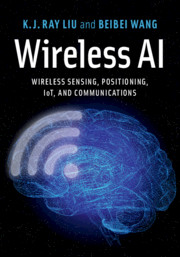Refine search
Actions for selected content:
6930 results for ai写歌软件官网,ai插件下载网站,ai免费素材网,外网ai怎么用,ai视频生成网页,等欢迎访问豌豆Ai站群搜索引擎系统官方网站:www.wd.chat
The AI in AI EDAM
-
- Article
-
- You have access
- HTML
- Export citation
10 - AI Ethics and Ethical AI
- from Part II - Social and Moral Issues
-
-
- Book:
- The Cambridge Companion to Religion and Artificial Intelligence
- Published online:
- 20 November 2024
- Print publication:
- 21 November 2024, pp 165-181
-
- Chapter
- Export citation
AY
-
- Book:
- A History of Egypt
- Published online:
- 05 March 2014
- Print publication:
- 03 October 2013, pp 238-242
-
- Chapter
- Export citation
The feminine endings *-ay and *-āy in Semitic and Berber
-
- Journal:
- Bulletin of the School of Oriental and African Studies / Volume 81 / Issue 2 / June 2018
- Published online by Cambridge University Press:
- 28 March 2018, pp. 205-225
- Print publication:
- June 2018
-
- Article
- Export citation
16 - Will AI Be Conscious?
-
- Book:
- Understanding Technology and Society
- Published online:
- 30 September 2025
- Print publication:
- 10 July 2025, pp 191-210
-
- Chapter
- Export citation
3 - Ethics of AI
- from Part I - AI, Ethics and Philosophy
-
-
- Book:
- The Cambridge Handbook of the Law, Ethics and Policy of Artificial Intelligence
- Published online:
- 06 February 2025
- Print publication:
- 13 February 2025, pp 59-78
-
- Chapter
-
- You have access
- Open access
- HTML
- Export citation
Part I - Religions and AI
-
- Book:
- The Cambridge Companion to Religion and Artificial Intelligence
- Published online:
- 20 November 2024
- Print publication:
- 21 November 2024, pp 31-128
-
- Chapter
- Export citation
16 - AI Platforms
- from Part V - Application and Regulation of AI
-
-
- Book:
- The Cambridge Handbook of AI and Consumer Law
- Published online:
- 21 October 2024
- Print publication:
- 31 October 2024, pp 236-251
-
- Chapter
- Export citation
1 - AI and Consumers
- from Part I - Rise of AI Consumer Markets
-
-
- Book:
- The Cambridge Handbook of AI and Consumer Law
- Published online:
- 21 October 2024
- Print publication:
- 31 October 2024, pp 3-8
-
- Chapter
- Export citation
Chapter 2 - <ai> for /ae̯/
- from Part I - Old-fashioned Spellings
-
- Book:
- Orthographic Traditions and the Sub-elite in the Roman Empire
- Published online:
- 25 May 2023
- Print publication:
- 08 June 2023, pp 47-49
-
- Chapter
-
- You have access
- Open access
- HTML
- Export citation
15 - Patenting AI
- from Part V - AI and Intellectual Property Law
-
-
- Book:
- The Cambridge Handbook of Artificial Intelligence
- Published online:
- 28 July 2022
- Print publication:
- 11 August 2022, pp 215-222
-
- Chapter
- Export citation

Wireless AI
- Wireless Sensing, Positioning, IoT, and Communications
-
- Published online:
- 27 September 2019
- Print publication:
- 03 October 2019
On the intersection of AI and OR
-
- Journal:
- The Knowledge Engineering Review / Volume 16 / Issue 1 / March 2001
- Published online by Cambridge University Press:
- 24 August 2001, pp. 1-4
-
- Article
-
- You have access
- Export citation
29 - EU and AI
- from Part IV - Comparative Perspectives
-
-
- Book:
- The Cambridge Handbook of Private Law and Artificial Intelligence
- Published online:
- 21 March 2024
- Print publication:
- 28 March 2024, pp 636-656
-
- Chapter
- Export citation
1 - AI for Lawyers
-
-
- Book:
- The Cambridge Handbook of Private Law and Artificial Intelligence
- Published online:
- 21 March 2024
- Print publication:
- 28 March 2024, pp 18-35
-
- Chapter
- Export citation
Performing AI: Labor and Complexity on the Contemporary Stage
-
- Journal:
- TDR: The Drama Review / Volume 68 / Issue 1 / March 2024
- Published online by Cambridge University Press:
- 01 March 2024, pp. 70-86
- Print publication:
- March 2024
-
- Article
-
- You have access
- Open access
- HTML
- Export citation
13 - Responsible AI
- from Part V - Further Explorations
-
- Book:
- A Hands-On Introduction to Machine Learning
- Published online:
- 20 January 2023
- Print publication:
- 29 December 2022, pp 348-366
-
- Chapter
- Export citation
23 - AI Judges
- from Part VII - Future of AI
-
-
- Book:
- The Cambridge Handbook of Artificial Intelligence
- Published online:
- 28 July 2022
- Print publication:
- 11 August 2022, pp 347-363
-
- Chapter
- Export citation
Chapter 17 - AI and the Consumer
-
-
- Book:
- Artificial Intelligence and the Law
- Published by:
- Intersentia
- Published online:
- 26 May 2021
- Print publication:
- 11 February 2021, pp 461-486
-
- Chapter
- Export citation
1 - Generative AI
- from Part I - Understanding Generative AI from Multidisciplinary Perspectives
-
-
- Book:
- The Cambridge Handbook of Generative AI and the Law
- Published online:
- 08 August 2025
- Print publication:
- 07 August 2025, pp 3-10
-
- Chapter
- Export citation
